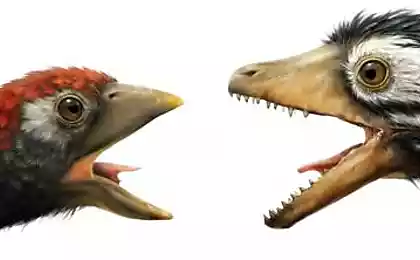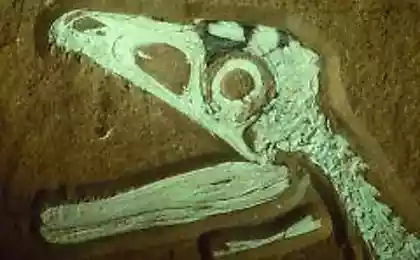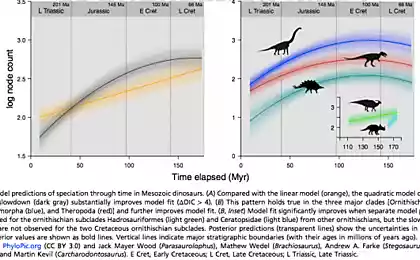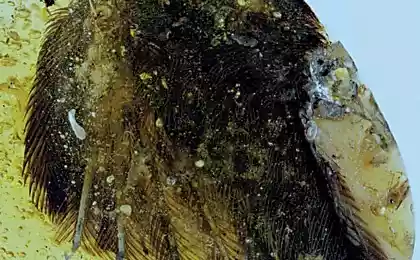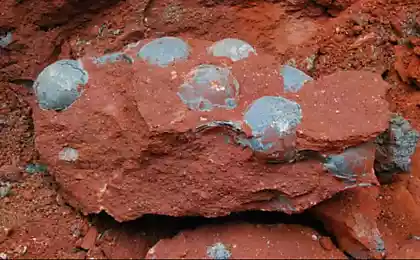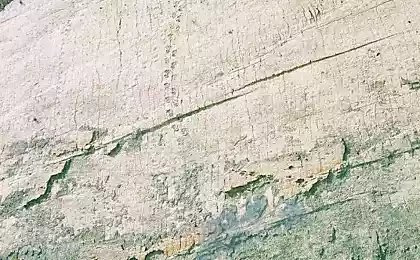489
Dinosaur eggs as a source of information about the life of ancient inhabitants of the Earth

That dinosaurs were hatched from eggs, the researchers do not argue for a long time. About the development process of the dinosaur inside the egg too, knows quite a lot. But how much time future spent inside dinosaur eggs? Weeks, couple months? Scientists from the University of Florida in Tallahassee believe that they managed to figure it out.
"One of the most important secrets of the dinosaurs was the fact that paleontologists knew little about the development of embryos. How quickly did inkubirovanija eggs like crocodiles and lizards, or perhaps birds, eggs which develop very quickly?", says Gregory Erickson, one of the participants of the study.
A really interesting question, although the answer could not be obtained long enough. The fact that scientists have found not so many eggs, which it would be possible to trace the development of the embryo. Recently in China, Mongolia and Argentina, paleontologists were able to discover several clutches of eggs. The study of these fossils has helped clarify how dinosaurs developed inside their limestone cover.
Plus, failed to understand how was the development of embryos in their first days. This fact was cleared up thanks to the discovery in Mongolia. There, scientists have discovered the eggs of protoceratops (Protoceratops andrewsi) and separatefrom (Hypacrosaurus stebingeri). Eggs to find the so-called embryonic teeth. It is possible to know the age of the eggs, since the formation of the teeth comes in layers, day by day. Every day the tooth is covered with another layer of dentin. And if you cut the tooth, it becomes clear what the age of the embryo.
As it turned out, Protoceratops andrewsi conducted in eggs for about three months, and Hypacrosaurus stebingeri — for six months or so. Perhaps, scientists say, it is this protracted development is one of the reasons for the extinction of the dinosaurs.
Scientists have made several conclusions having carefully considered all the findings. These conclusions.

Dinosaurs were able to hatch eggs and was partially warm-blooded
Previously it was thought that dinosaurs laid eggs somewhere in a secluded place in the heat and left. Now the scientists have changed. First, many species of dinosaurs had the ability to regulate the temperature of the blood. To find out it failed due to the material of the shell — usually calcium carbonate. In shell, the researchers found isotopes of oxygen that are in the materials in different ways, depending on the temperature. In colder conditions, the isotopes are marked more closely, so to speak.
The research team decided that the dinosaur eggs which were discovered, weren't as warm blooded as modern birds. But they could raise your body temperature above the average temperature of the environment. Not as effective as it can do birds, but still, it's better than nothing.
Not all dinosaurs hatched eggs, as not all were warm-blooded. But now more and more facts indicate that these ancient animals were able to maintain the temperature of the blood and to hatch their offspring. It is possible (and likely is), there were fully warm-blooded species.
Adult dinosaurs cared for their young
Perhaps it did not all dinosaurs, but scientists believe that one species hatched eggs and then cared for the young successors of the family. For example, did the duck-billed dinosaurs. Of course, certain scientists can't, but circumstantial evidence of this exists. For example, in Montana (USA) was discovered laying eggs of the duckbilled parents. Shells of broken eggs were interspersed with fossilized remains of adult individuals. This place has become a common grave for the embryos in the eggs and their parents. As the nest was the adult animals, scientists have decided that the duck-billed dinosaurs were attentive parents.
In addition, there are more similar findings. In 1923 in the Gobi desert has been found laying eggs, presumably, protoceratops. Near the walls paleontologists have discovered the remains of previously unknown species of dinosaurs. He was considered the thief, who pulled the eggs out of the laying. Even gave the name Oviraptor, meaning "egg thief". And only in 1990 Oviraptor was acquitted. Scientists have discovered laying the same eggs quite Mature embryos inside. It turned out that embryos and adult individuals whose remains were also found nearby, belonged to a single species Oviraptor.
It turned out that dinosaurs of this type are not only not stealing eggs, but guarding its own walls. Moreover, scientists were able to discover dinosaur sibling species, which are also guarded its walls.
Shells of eggs of dinosaurs were colorful
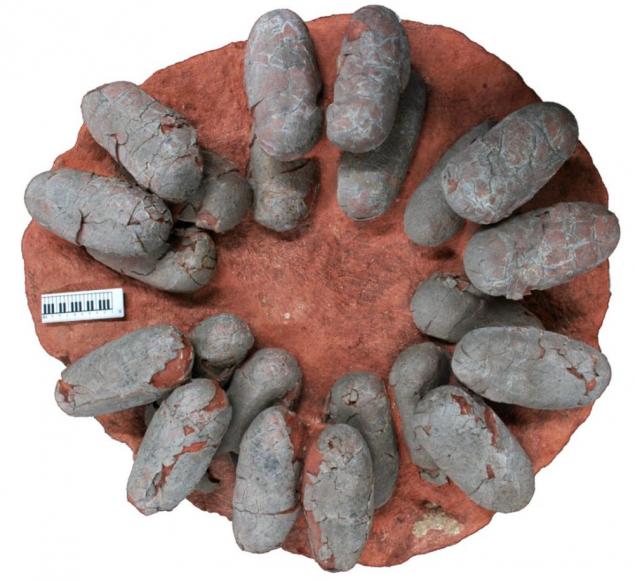
It is clear that the eggs of different dinosaurs were distinguished from each other by size, color, pattern of the surface. Yet the most unusual color is recognized as bluish green. The eggs of this color was postponed dinosaur species Heyuannia huangi, who once lived in China. Scientists believe that this color could make the walls more subtle than, for example, the laying of eggs white. Nest with blue-green eggs were hidden among the leaves, and finding them was difficult.
A laying partially buried
The eggs of virtually all animals have pores, which provide the gas exchange with the environment. By nature then, scientists can determine the conditions in which were eggs most of the time.
At this time, found eggs, and not such a large number of dinosaurs, but these findings allow us to draw certain conclusions. So, 29 species of dinosaurs whose clutches were found, definitely buried eggs. This can be seen in the pore size of the eggs that were buried, the pores were more. At the same time, some theropods did nothing of the sort, and laid eggs in open nests, without covering them with earth or sand.
Paleontologists believe that burying the eggs — the more primitive method of rearing. And open nests is a step in the direction of the birds and their way of nesting.
It may well be that the theropods were more warm-blooded than their older relatives. This allowed them to maintain a constant microclimate brickwork due to the temperature of their own bodies. Some species of dinosaurs could not do nest on the ground in a forest or plains, and on a tree, in a cave or on the hills.
Source: geektimes.ru/post/284320/
NASA: instead of the expedition to Venus, we will send two probes to the asteroid belt
How not to go blind using gadgets: applications for vision
